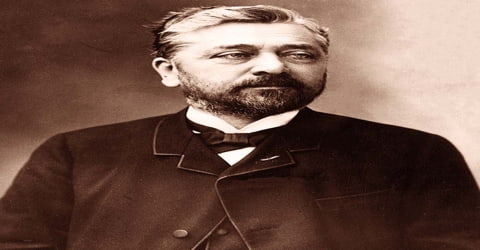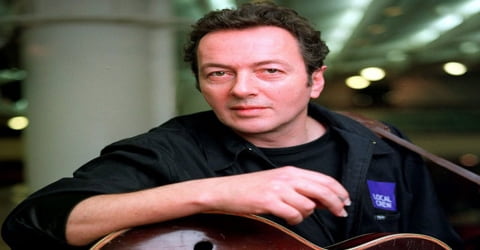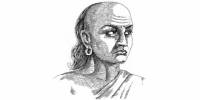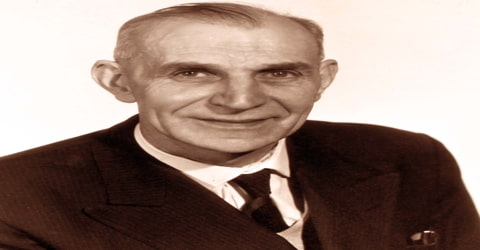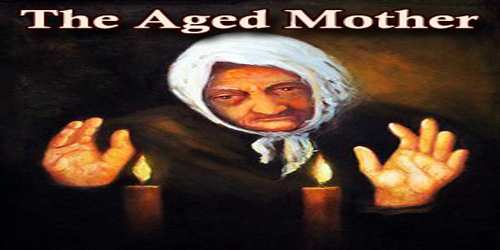Biography of Gustave Eiffel
Gustave Eiffel – French civil engineer.
Name: Alexandre Gustave Eiffel
Date of Birth: 15 December 1832
Place of Birth: Dijon, Côte-d’Or, Burgundy, France
Date of Death: 27 December 1923 (aged 91)
Place of Death: Paris, France
Occupation: Engineer
Father: François Alexandre Boenickhausen
Mother: Catherine Melanie Moineuse
Spouse/Ex: Marguerite Gaudelet (married 1862-1877)
Children: 5
Early Life
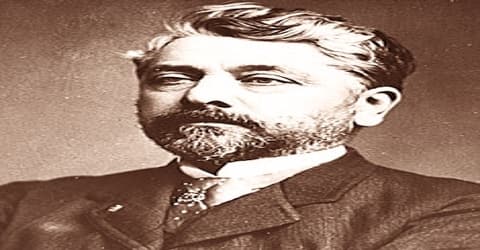
A French civil engineer who designed and oversaw construction of the Eiffel Tower, Gustave Eiffel was born on 15th December 1832, in Burgundy, France, in the city of Dijon, Côte-d’Or, the first child of Catherine-Mélanie (née Moneuse) and Alexandre Bönickhausen. Eiffel began to specialize in constructing with metal after college, and his early work focused chiefly on bridges. In 1879, the chief engineer on the Statue of Liberty died and Eiffel was hired to replace him, going on to design the metallic skeleton of the structure.
A graduate of École Centrale Paris, Eiffel made his name building various bridges for the French railway network, most famously the Garabit viaduct. He is best known for the world-famous Eiffel Tower, built for the 1889 Universal Exposition in Paris, and his contribution to building the Statue of Liberty in New York. After his retirement from engineering, Eiffel focused on research into meteorology and aerodynamics, making significant contributions in both fields.
Gustave Eiffel was associated in constructing several bridges including the famous Garabit Viaduct for the railway network of France. At that time it was considered the highest bridge in the world. His expertise was not limited to France only. He made a mark of his excellence in other countries including the United States, Spain, Brazil, Uruguay, Peru, Mexico and Chile among others. He was involved in the construction and designs of many buildings and structures including ‘Cathedral of San Pedro de Tacna’, Peru, the ‘Grand Hotel Traian’ in Iaşi, Romania, Konak Pier in İzmir, Turkey and ‘Catedral de Santa María’ in Chiclayo, Peru. One of his noted works was designing of the metallic structure of the ‘Statue of Liberty’ in the United States that fell on him after the sudden death of its original engineer.
Setting out on his career, Gustave Eiffel specialized in metal construction, most notably bridges. He worked on several over the next few decades, letting mathematics find ways to build lighter, stronger structures. The most renowned work that brought him international fame and cemented his name in history was the ‘Eiffel Tower’ of Paris. Post-retirement from engineering he devoted the rest of his life in meteorology and aerodynamics.
Childhood, Family and Educational Life
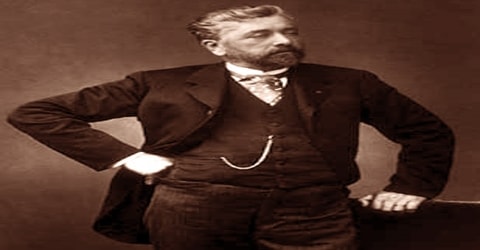
Gustave Eiffel, in full Alexandre-Gustave Eiffel (born Bonickhausen dit Eiffel; /ˈaɪfəl/; French pronunciation: ɛfɛl), was born on 15th December 1832 in Djion, France, as the eldest child of Alexandre Bonickhausen dit Eiffel and Catherine-Mélanie. The family came from a region near the Eifel Mountains and adopted the name ‘Eiffel’. His father an ex-military man and served the French Army as an administrator and his mother was in the charcoal business that was passed on to her from her parents. Later, his father left his job to join the business. As his mother had to look after the business, he spent most of his childhood with his grandmother.
Eiffel was not a studious child, and thought his classes at the Lycée Royal in Dijon boring and a waste of time, although in his last two years, influenced by his teachers for history and literature, he began to study seriously, and he gained his baccalauréats in humanities and science. An important part in his education was played by his uncle, Jean-Baptiste Mollerat, who had invented a process for distilling vinegar and had large chemical works near Dijon, and one of his uncle’s friends, the chemist Michel Perret. Both men spent a lot of time with the young Eiffel, teaching him about everything from chemistry and mining to theology and philosophy.
Eiffel studied at the ‘Lycée Royal’ in Dijon and earned his baccalauréats in science and humanities. He went on to attend the Collège Sainte-Barbe in Paris, to prepare for the difficult entrance exams set by engineering colleges in France, and qualified for entry to two of the most prestigious schools École polytechnique and École Centrale des Arts et Manufactures and ultimately entered the latter. He enrolled at the ‘École Centrale des Arts et Manufactures’ and studied chemistry. In 1855, Eiffel completed his graduation earning the thirteenth position out of eighty candidates.
Personal Life
Gustave Eiffel got married to Marie Gaudelet on 8th July 1862. The couple remained married for fifteen years and had five children together (three girls, and two boys) before Marie caught pneumonia and died in 1887. Gustave never married again.
Career and Works
In 1855, Gustave Eiffel began to specialize in metal construction, especially bridges, after graduation from the College of Art and Manufacturing. He did an unpaid job for a few months to assist his brother-in-law in a foundry. Eiffel got his first paid job as the secretary of Charles Nepveu, a railway engineer. When the company of Nepveu became bankrupt, he arranged for a bridge design work for Eiffel that was to be constructed for the ‘Saint Germaine’ railway. ‘Compagnie Belge de Matériels de Chemin de Fer’, the company that took over a few businesses of Nepveu made him managing director of its two factories and eventually, Eiffel headed the research department.
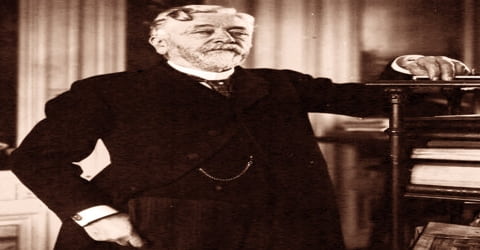
In 1857 Nepveu negotiated a contract to build a railway bridge over the river Garonne at Bordeaux, connecting the Paris-Bordeaux line to the lines running to Sète and Bayonne, which involved the construction of a 500 m (1,600 ft) iron girder bridge supported by six pairs of masonry piers on the river bed. These were constructed with the aid of compressed air caissons and hydraulic rams, both innovative techniques at the time. Eiffel was initially given the responsibility of assembling the metalwork and eventually took over the management of the entire project from Nepveu, who resigned in March 1860.
In 1858, Eiffel directed the erection of an iron bridge at Bordeaux, followed by several others, and designed the lofty, arched Gallery of Machines for the Paris Exhibition of 1867 his reputation was solidified. Eiffel designed the 525-foot steel-arched Ponte Maria Pia Bridge over the Douro River in Oporto, Portugal, in 1876, which was completed the following year. Working from the same design nearly 20 years later, he built the renowned 540-foot Garabit viaduct in Truyère, France. Suspended 400 feet above the surface of the water, it was the highest bridge in the world for years after its construction.
Gustave Eiffel got a contract of supervising the construction of locomotives for the government of Egypt, in 1866 and in that pursuit he visited Egypt. His reputation as an architect and civil engineer got him more projects and he established his own workshop in 1866 and undertook projects in different countries. One such project was all-metal construction of the church of San Marcos in Arica, Chile. Various parts of the project were manufactured in France and shipped to the site to be assembled there.
Eiffel’s first important commission was for two viaducts for the railway line between Lyon and Bordeaux, and the company also began undertaking work in other countries, including the church of San Marcos in Arica, Chile, which was an all-metal prefabricated building, manufactured in France and shipped to South America in pieces to be assembled on site. On 6th October 1868 Eiffel entered into a partnership with Théophile Seyrig, like Eiffel a graduate of the École Centrale, forming the company Eiffel et Cie (“Eiffel and Company”).
Eiffel’s most famous bridge, the Maria Pia over the Douro at Oporto, Portugal (1876), spans 500 feet by a single arch, 200 feet above high-water level, which with additional side pylons supports the horizontal superstructure. Also during that year, Eiffel collaborated with the architect. L.A. Boileau the Younger on the Bon Marché Department Store in Paris, the first glass and cast iron department store. A glass wall along all three street facades, with circular pavilions at the corners, enclosed a store comprising open courts covered by skylights to an extent of 30,000 square feet. Slender columns supported balconies, bridges, and the glazed roof. The store still stands, although it has a masonry skin added in the 1920s.
Eiffel bridged the Douro River at Oporto, Port., in 1877, with a 525-foot (160-metre) steel arch, which he followed with an even greater arch of the same type, the 540-foot (162-metre) span Garabit viaduct over the Truyère River in southern France, for many years the highest bridge in the world, 400 feet (120 m) over the stream. He was one of the first engineers to employ compressed-air caissons in bridge building. He designed the movable dome of the observatory at Nice and the framework of the Statue of Liberty in New York Harbor.
The Exposition Universelle in 1878 firmly established Eiffel’s reputation as one of the leading engineers of the time. As well as exhibiting models and drawings of work undertaken by the company, Eiffel was also responsible for the construction of several of the exhibition buildings. One of these, a pavilion for the Paris Gas Company, was Eiffel’s first collaboration with Stephen Sauvestre, who was later to become the head of the company’s architectural office. The partnership with Seyrig was dissolved, in 1879 and the company was renamed the Compagnie des Établissements Eiffel. The company bagged the project of constructing a railway bridge, Garabit Viaduct in France in that very year. The bridge that was completed in 1884 was considered the highest bridge in the world at that time adding another feather in Eiffel’s cap.
Eiffel was contacted by Auguste Bartholdi in 1881 to design the interior metallic structure of the ‘Statue of Liberty’ in Liberty Island, New York, the United States after the sudden death of its engineer Eugène Viollet-Le-Duc in 1879. The parts of the statue were first assembled at his workshop in Paris and after checking it was again dismantled and shipped in parts to the US for its final assembly. The statue was opened in 1886. Advancing in his career in 1886, he designed a dome for the ‘Nice Observatory’, an astronomical observatory in Nice, France. The dome which was noted for its movable feature was the largest of its kind in the world at that time.
Gustave Eiffel is most famous for what would become known as the Eiffel Tower, which was begun in 1887 for the 1889 Universal Exposition in Paris. The tower is composed of 12,000 different components and 2,500,000 rivets, all designed and assembled to handle wind pressure. The structure is a marvel in the material economy, which Eiffel perfected in his years of building bridges if it were melted down, the tower’s metal would only fill up its base about two and a half inches deep. It also directed his interest to problems of aerodynamics, and he used the tower for a number of experiments.
Eiffel took two years to construct the Eiffel Tower, whose height is 984 feet. It is not only a prominent tourist attraction in France but is also considered a work of art today by the Parisans and critics. He earned a contract in 1887 for building locks for the Panama Canal. His reputation was hurt after he was charged with misappropriation of funds along with Ferdinand De Lesseps, the head of the ‘French Panama Canal Company’ and Lesseps’s son following the liquidation of the company. On 9th February 1893, Eiffel was found guilty and sentenced for two years in prison along with a fine of 20,000 francs. A further appeal at the ‘Cour de Cassation’ however acquitted him of all charges and obligations.
Gustave Eiffel also designed the dome for the Astronomical Observatory in Nice, in 1886. This was the most important building in a complex designed by Charles Garnier, later among the most prominent critics of the Tower. The dome, with a diameter of 22.4 m (73 ft), was the largest in the world when built and used an ingenious bearing device: rather than running on wheels or rollers, it was supported by a ring-shaped hollow girder floating in a circular trough containing a solution of magnesium chloride in water. This had been patented by Eiffel in 1881.
The main structural work of ‘Eiffel Tower’ was completed at the end of March, and on the 31st Eiffel celebrated this by leading a group of government officials, accompanied by representatives of the press, to the top of the tower. Since the lifts were not yet in operation, the ascent was made by foot and took over an hour, Eiffel frequently stopping to make explanations of various features. Most of the party chose to stop at the lower levels, but a few, including Nouguier, Compagnon, the President of the City Council and reporters from Le Figaro and Le Monde Illustré completed the climb. At 2.35 Eiffel hoisted a large tricolor, to the accompaniment of a 25-gun salute fired from the lower level. By June construction had reached the second level platform, and on Bastille Day this was used for a fireworks display, and Eiffel held a celebratory banquet for the press on the first level platform.
The construction of the Eiffel tower infused in him the interest for aerodynamics. Eiffel built an aerodynamic laboratory in 1905 at the base of the tower and in 1909 constructed his first ever wind tunnel there. Post-retirement from engineering he devoted the rest of his life studying meteorology and aerodynamics.
Eiffel moved his set up from the tower to a new location, in 1912 at Auteuil and established a larger research laboratory there. One of his noted books on aerodynamics among the many he wrote is ‘Resistance of the Air and Aviation’. Eiffel went on to write several books on aerodynamics, most notably Resistance of the Air and Aviation, first published in 1907.
Awards and Honor
In 1913, the ‘Smithsonian Institution’ honored Gustave Eiffel with the ‘Samuel P. Langley Medal for Aerodromics’ award.
Death and Legacy
Gustave Eiffel died on 27th December 1923, while listening to Beethoven’s 5th Symphony, Second movement Andante, in his mansion on Rue Rabelais in Paris, France. He was buried in the family tomb in Levallois-Perret Cemetery.
Eiffel’s career was facilitated by the Industrial Revolution. For a variety of economic and political reasons, this had been slow to make an impact in France, and Eiffel had the good fortune to be working at a time of rapid industrial development in France. Eiffel’s importance as an engineer was twofold. Firstly he was ready to adopt innovative techniques first used by others, such as his use of compressed-air caissons and hollow cast-iron piers, and secondly he was a pioneer in his insistence on basing all engineering decisions on thorough calculation of the forces involved, combining this analytical approach with an insistence on a high standard of accuracy in drawing and manufacture.
Though Eiffel designed and constructed a number of great structures in his illustrious career, his most famous and iconic structure is the world-famous Eiffel Tower.
Information Source:
